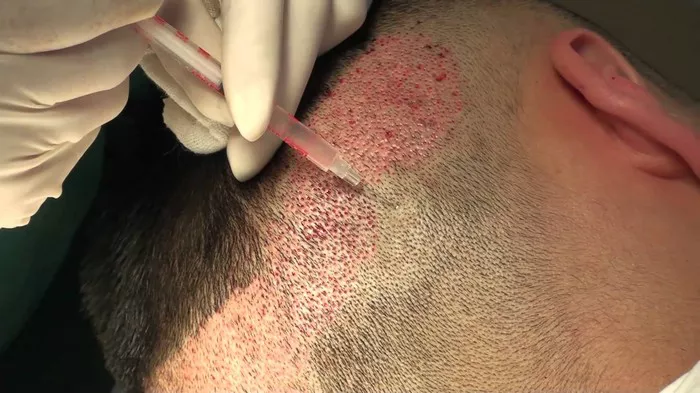Hair transplant surgery has become a popular option for individuals seeking a permanent solution to hair loss. However, many patients are eager to know when they can expect to see the results of their hair transplant and when their hair will start growing. In this comprehensive article, we will delve into the intricate timeline of hair growth after a hair transplant, shedding light on what patients can anticipate during their hair restoration journey.
Understanding the Hair Growth Cycle
Before exploring the timeline of hair growth after a hair transplant, it is essential to comprehend the natural hair growth cycle. The hair growth cycle consists of three phases:
1. Anagen (Growth) Phase:
The anagen phase is the active growth phase of the hair follicle. During this period, hair grows steadily at an average rate of half an inch per month. The anagen phase can last anywhere from two to seven years, with genetics playing a role in determining the duration.
2. Catagen (Transition) Phase:
The catagen phase is a transitional phase lasting for a brief period of about two weeks. During this phase, the hair follicle detaches from the blood supply and stops growing.
3. Telogen (Resting) Phase:
The telogen phase is a resting phase that lasts for about three to four months. After this period, the hair sheds, and the cycle starts again with the anagen phase.
Stages of Hair Transplant
Hair transplant surgery is a meticulously planned and carefully executed procedure aimed at restoring natural hair growth and enhancing an individual’s appearance and confidence. The process involves several distinct stages, each playing a crucial role in achieving successful and long-lasting results. In this article, we explore the stages of a hair transplant, from the initial consultation to the post-operative recovery.
1. Consultation and Assessment
The first stage of a hair transplant journey involves an initial consultation with a qualified hair transplant surgeon. During this meeting, the surgeon will assess the patient’s hair loss pattern, donor hair availability, scalp condition, and overall health. The surgeon will also discuss the patient’s expectations, goals, and candidacy for the procedure. An in-depth discussion about the chosen transplant technique (Follicular Unit Transplantation or Follicular Unit Extraction) will take place, along with an explanation of the potential risks and benefits.
2. Preoperative Preparation
Before the day of the surgery, patients will receive detailed preoperative instructions to ensure they are adequately prepared for the procedure. These instructions may include guidelines on medication usage, avoiding certain substances, and refraining from smoking. Patients may be advised to wash their hair with a specified antiseptic shampoo to reduce the risk of infection.
3. Donor Area Harvesting
On the day of the surgery, the patient is positioned comfortably, and the donor area (usually the back and sides of the scalp) is anesthetized. The hair transplant surgeon then carefully harvests hair follicles from the donor area based on the chosen technique (FUT or FUE).
Follicular Unit Transplantation (FUT):
In FUT, a thin strip of hair-bearing skin is removed from the donor area, and skilled technicians dissect it into individual follicular units for transplantation.
Follicular Unit Extraction (FUE):
In FUE, individual hair follicles are directly extracted from the donor area using a specialized punch-like instrument.
4. Recipient Area Preparation
After the donor area harvesting, the hair transplant team prepares the recipient area (balding or thinning region) for transplantation. The recipient area is also anesthetized to ensure patient comfort during the procedure.
5. Transplantation of Hair Follicles
With the recipient area prepared, the surgeon and the team meticulously transplant the harvested hair follicles into the recipient sites. The follicles are placed strategically to mimic the natural hair growth pattern and create a natural-looking hairline.
Precautions after transplant surgery
After the hair follicles are transplanted, the patient is provided with specific postoperative care instructions to optimize the healing process and hair growth. These instructions typically include:
1. Gentle Hair Washing:
Patients are advised to wash their hair gently within the first few days after surgery to keep the scalp clean and minimize the risk of infection.
2. Avoiding Strenuous Activities:
Patients should avoid strenuous activities, heavy lifting, and intense exercise for a few weeks to prevent any tension on the transplant area.
3. Medication Usage:
The surgeon may prescribe antibiotics and pain medications to prevent infection and manage any postoperative discomfort.
How soon will my hair grow back after a hair transplant
1. Initial Hair Growth
Around three to four months after the hair transplant, patients can start to observe the initial signs of new hair growth. The hair will gradually thicken and mature over time.
2. Progressive Improvement
Between six to nine months post-transplant, patients will witness more significant progress in their hair growth. The transplanted hair will continue to fill in, providing increased coverage and density to the treated areas.
3. Full Results and Beyond
Beyond 12 months post-transplant, patients will experience the full benefits of the hair transplant surgery. The transplanted hair will have matured, providing a natural and undetectable hairline and overall appearance.
Conclusion
The timeline of hair growth after a hair transplant is a gradual and transformative journey. While immediate results may not be visible, patients can expect to see initial signs of growth within a few months of the procedure. As the transplanted hair continues to develop, patients will witness substantial improvements in coverage and density between six to nine months post-transplant. Full results will typically be achieved beyond 12 months, providing patients with a natural and permanent solution for their hair loss concerns. Remember, individual responses to hair transplant surgery may vary, and patience is key in embracing the rewarding transformation of a restored, confident appearance.


